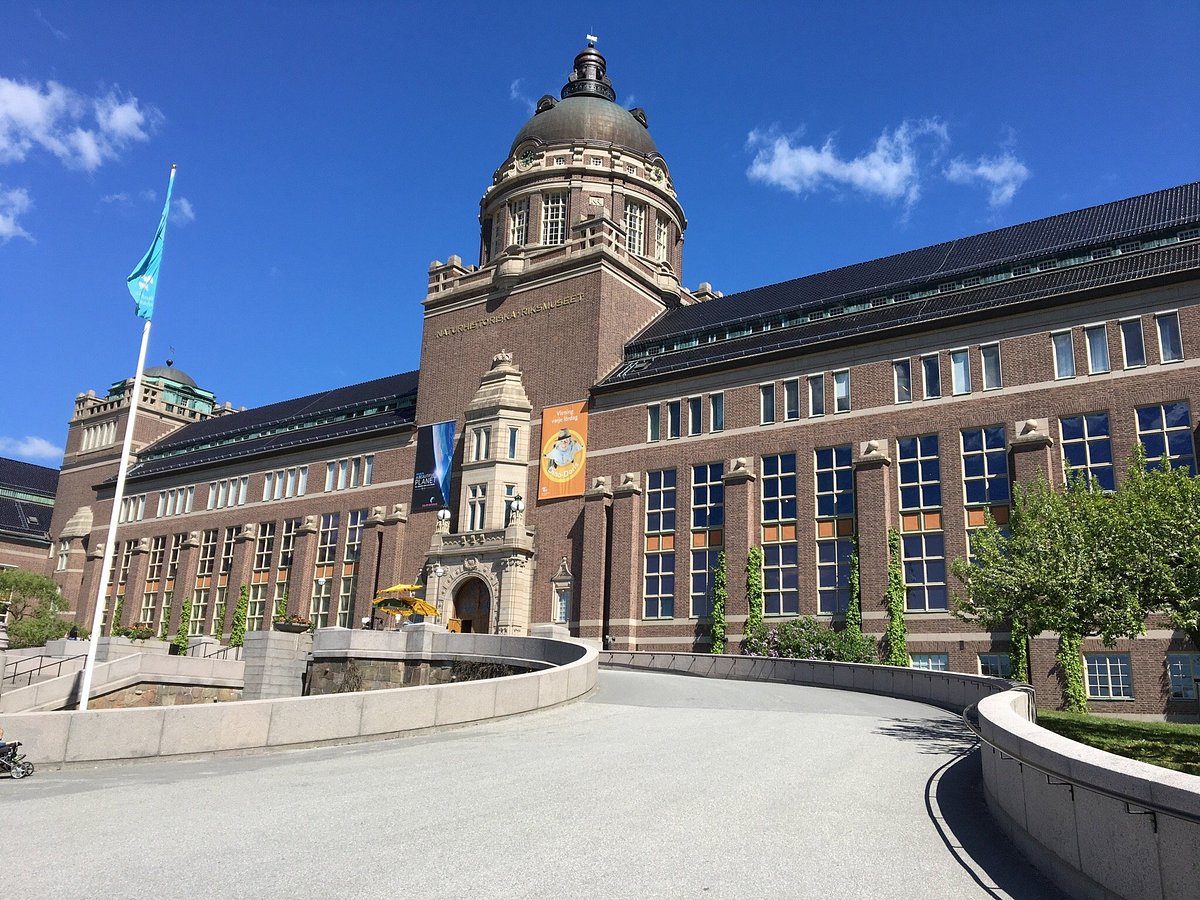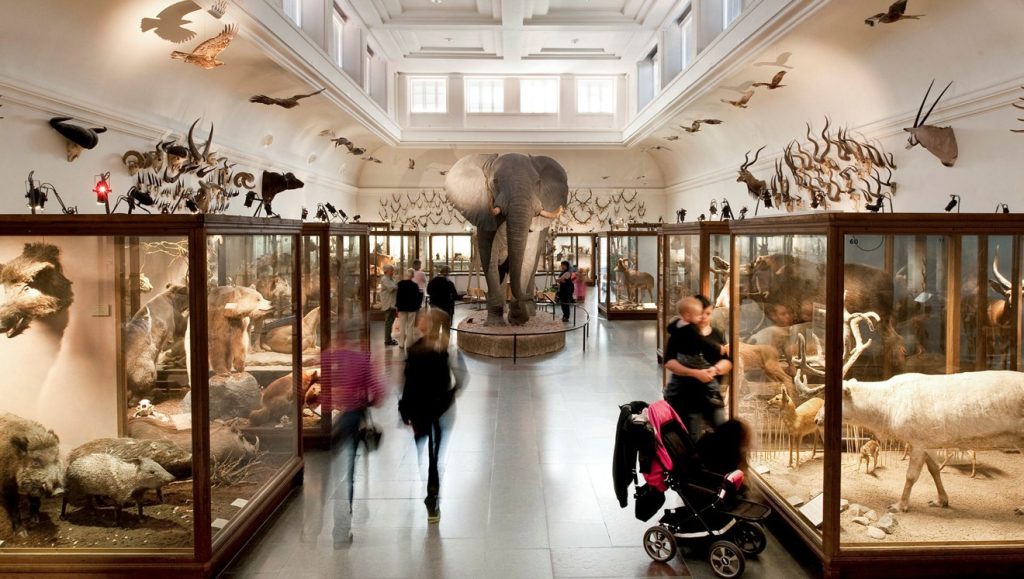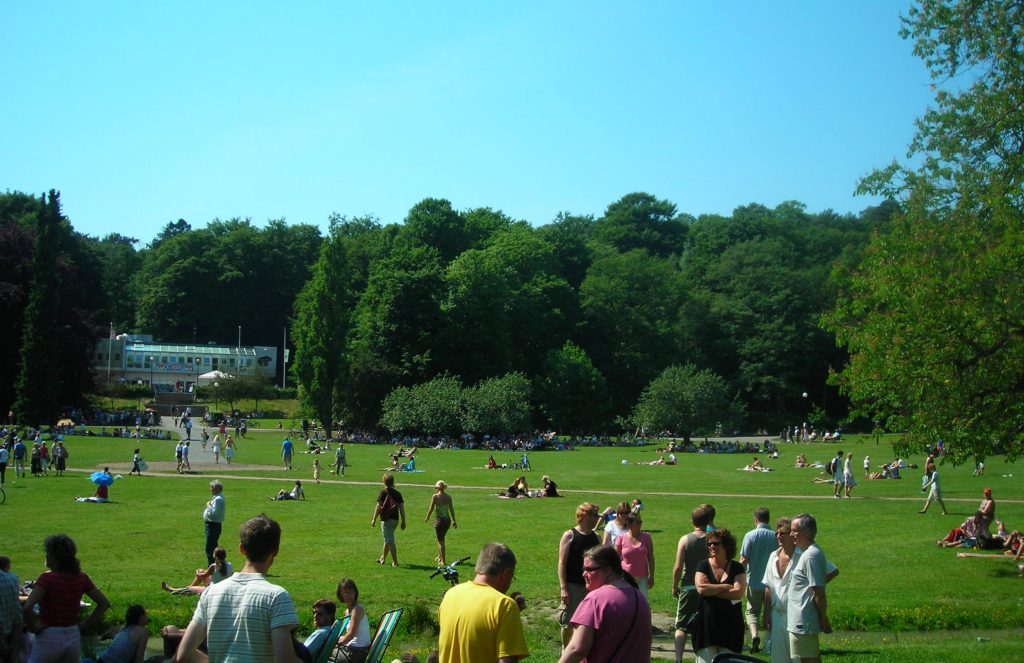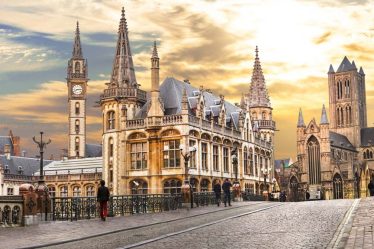
Every journey has its share of unplanned moments that quietly become the most unforgettable memories. In my Nordic travels, the western Swedish port city of Gothenburg was originally just a stopover—a quick check on the map. Yet, a chance “wrong turn” led me into an unexpected encounter with a whale, turning this quiet city into one of the most emotionally resonant highlights of my trip.
This accidental discovery was the Gothenburg Natural History Museum (Naturhistoriska Museet)—a seemingly traditional and even somewhat modest-looking institution. But it became the backdrop to the most emotionally charged, unrepeatable moment of my journey through Sweden.
I. Gothenburg: The Underrated Nordic Port City
For most travelers, Sweden often conjures images of Stockholm’s bustling glamour or Iceland-like aurora adventures. Gothenburg, nestled along Sweden’s southwestern coast, is frequently overlooked. It’s neither the capital nor an aurora hotspot—but it carries a quiet Nordic spirit, like a low-profile poet, whose beauty lies in its silence.
As Sweden’s second-largest city, Gothenburg is a port town rich in industrial roots and cultural ambiance. Unlike Stockholm’s hustle or Malmö’s multicultural blend, its charm lies in clear city planning, serene neighborhoods, and a uniquely welcoming and creative atmosphere.
Gothenburg is also the birthplace of Volvo and a vibrant university town with over 25 museums spanning technology, maritime heritage, nature, and contemporary art. It’s a city meant to be explored slowly. And on one lazy afternoon, I wandered straight into the heart of a whale’s story.
II. Prelude to the Museum: A Plan That Wasn’t
I had originally planned to take a leisurely walk through Slottskogen Park—a sprawling 137-hectare oasis beloved by Gothenburg locals. It offers winding trails, serene lakes, and even a charming petting zoo, making it a perfect spot to unwind. But that day, the sky began to darken with a quiet melancholy, and a chill crept into the air. Looking for a place to escape the drizzle, I spotted a gray-white classical building at the park’s edge. Its understated exterior and the simple sign reading “Naturhistoriska Museet” didn’t immediately promise anything extraordinary.
I expected a standard local museum, perhaps with dusty dioramas of Nordic animals or static displays of regional flora. Something educational, mildly interesting, and dry. But the moment I stepped inside, the air changed. There was a quiet reverence to the place, like the kind you feel in old libraries or forgotten chapels. It was as though I had wandered into a time capsule—a vintage nature documentary in three dimensions, where every still frame seemed to breathe with ancient life and quiet grandeur.
III. Reunion with a Whale: A Century-Old Encounter
The moment I entered the museum’s main hall, a profound stillness washed over me. The tall, vaulted ceilings echoed softly with the sound of my footsteps on creaking wooden floors. Warm, amber lighting glowed gently across old glass cases and faded informational panels, casting long shadows that made the space feel sacred—like a sanctuary for forgotten giants. I followed a series of modest signs, almost absent-mindedly, drawn by a strange anticipation I couldn’t explain.

Then I turned a corner—and stopped in my tracks. Before me stretched a colossal, blue-gray form, immense and silent. A sperm whale. Fully preserved, majestic even in stillness. It measured 16 meters from snout to tail, and likely weighed around 25 tons in life. It lay on its side, motionless yet commanding, as though dreaming of the ocean it once roamed. I instinctively held my breath, overwhelmed by a sudden wave of awe and tenderness. This was no replica, no museum-made mock-up. It was real—this creature had once moved through the deep, its heart beating beneath the waves.
The whale washed ashore on Sweden’s west coast in 1865, and remarkably, it was preserved in its entirety—becoming the only known full-bodied, undissected specimen of a large whale in the world. For over a century, it has rested here, bearing silent witness to generations of visitors, to changing eras and evolving science. It endures as both a scientific marvel and a poetic symbol of nature’s vast, unknowable beauty. And in that moment, I wasn’t just seeing a whale—I was communing with time itself.
IV. The Sleeping Giant: History and Myth of the Whale Hall
This whale is not just a biological exhibit—it is part of the city’s memory, a symbol rich with cultural metaphor. The display label identifies it as the Malmska Valen (“Malm’s Whale”), named after the scientist August Wilhelm Malm who helped preserve it.
What surprised me most was learning that in the early days of its exhibition, visitors could enter the whale’s body! The internal structure had been hollowed out while preserving the exterior, and a small wooden door led into its belly. Visitors would walk inside for a surreal experience. This bizarre feature became a local phenomenon and even sparked a “whale panic” in the early 1900s, when some claimed to have caught a cough or carried a curse after emerging from the whale. Eventually, for health reasons, the belly was sealed off permanently.
This unusual history elevates the whale beyond science—it becomes a kind of urban legend. At that moment in the quiet hall, I felt as if the whale was telling a story—one about nature, memory, and the intricate bond between humans and the world we live in.
V. Nordic Aesthetics: Beyond Education, a Thoughtful Experience
What makes the Gothenburg Natural History Museum truly remarkable isn’t just the whale—it’s how the museum embraces the Nordic aesthetic of quiet elegance and depth. Every exhibition label is clear and restrained, the visuals are professional yet warm.
In addition to the whale, there are hundreds of specimens showcasing Nordic wildlife—reindeer, moose, arctic foxes, snowy owls—frozen in natural, lifelike poses, as if caught mid-motion in a still frame of time.
Upstairs, the museum hosts thematic exhibits on climate change, Arctic ecosystems, and the history of evolution. Families with children will find plenty of interactive installations and educational games—informative yet fun.
I especially appreciated the thoughtfully placed “thinking spaces”—wooden benches, cozy reading corners by the windows, and philosophical quotes about nature. It’s not just a museum to “see,” but one that invites reflection.
VI. A Philosophical Encounter: Dialogue with Nature
As I left the whale hall, I glanced back one more time. The whale still lay in perfect silence, yet radiated a power greater than any crashing wave.
That accidental visit taught me something profound: the magic of travel lies not in what we plan, but in those moments of resonance and stillness. Whales are nature’s gentlest giants, and their lifespan and journeys through the ocean are far beyond our human understanding. When this whale stranded, it was nature yielding; when it was preserved, it was humanity honoring life; and now, lying undisturbed in the museum for a century, it reminds us that we, too, are part of nature.
At that moment, I finally understood what “unrepeatable moments” really meant. It’s not about rarity of place—but the uniqueness of how you meet it. You can’t plan your way into a whale’s world, nor can you predict when an ancient exhibit will move you to tears.

VII. Postscript: How to Visit the Whale Yourself
If you wish to see the “Gothenburg Whale” in person, here are some useful details to help you plan your visit smoothly:
- Address: Museivägen 10, 413 11 Gothenburg, Sweden
- Opening Hours: Generally open from Tuesday to Sunday, 10:00–17:00. The museum is closed on Mondays, but it’s always wise to check the latest updates on their official website before your visit, as hours can occasionally change due to holidays or special events.
- Admission: As of now, admission is free of charge, making it an excellent cultural experience for all kinds of travelers, from solo wanderers to families with kids.
- Getting There: From Gothenburg’s central area, you can easily hop on a tram—lines 1, 2, or 6—to either “Botaniska Trädgården” or “Linnéplatsen.” From there, it’s just a short 5-minute walk through a leafy path, often accompanied by birdsong and the occasional squirrel.
I recommend allocating at least 2–3 hours for your visit, especially if you enjoy diving deep into ecological and historical themes. The museum’s calm atmosphere encourages a slower pace, inviting you to pause, reflect, and truly absorb the stories it tells. If you’re particularly interested in current environmental topics or cutting-edge scientific displays, make sure to check out their rotating exhibitions—they often touch on climate change, biodiversity, and evolving ecosystems in the Nordic region.
VIII. Beyond the Whale: Gothenburg, Infinite in Its Quiet Ways
This whale museum encounter gave me more than just a glimpse into nature—it was a true expression of Gothenburg’s soul. The city doesn’t try to impress you—it simply shows up as itself, ready for you to find your own meaning.
When I exited the museum, the rain had stopped. I returned to Slottskogen’s lush paths, still hearing the whale’s deep underwater hum echoing in my mind. I knew then—this memory had already embedded itself into my heart, irreplaceable and eternal.



